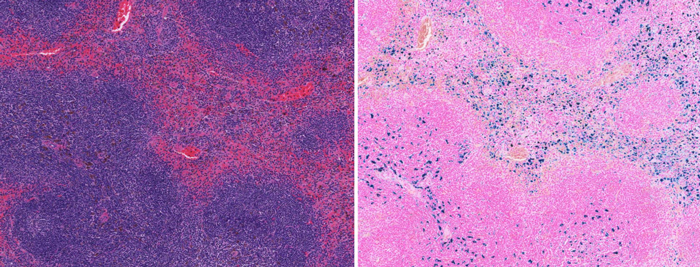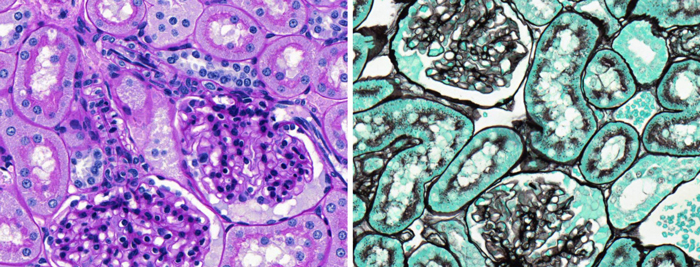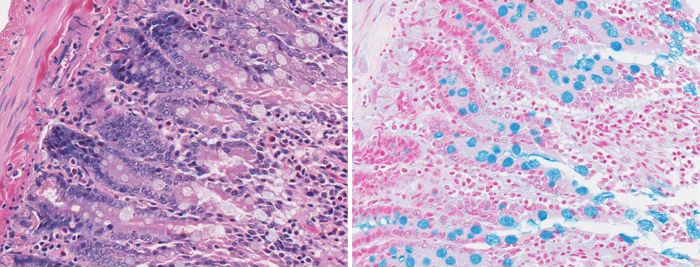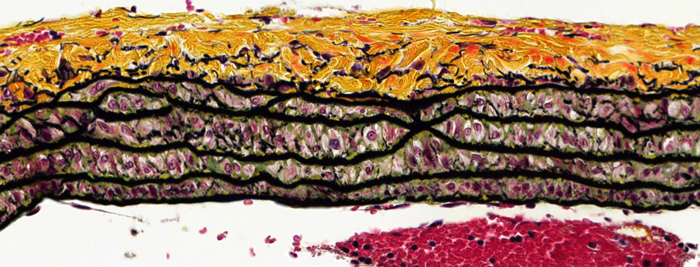Routine Stain – Hematoxylin and Eosin (H&E)
At the Histology Core we routinely stain slides with the Hematoxylin and Eosin (H&E) stain. It provides a comprehensive picture of the microanatomy of a tissue and is frequently used by pathologists and researchers as an initial assessment.
How does H&E staining work?
It consists of 2 dyes; Hematoxylin and Eosin, which will stain the nucleus and the cytoplasm, respectively, in two different colors. Hematoxylin is a basic dye that stains the acidic components of the tissue (e.g., nucleus, ribosome, and rough endoplasmic reticulum) a purplish-blue color. Eosin is an acidic dye that stains the basic tissue components (e.g., cytoplasm, cell walls, extracellular fibers) a reddish or bright pink color.



